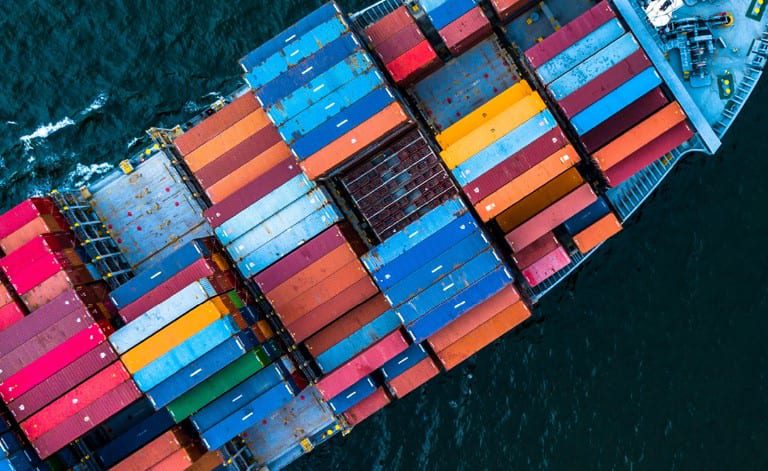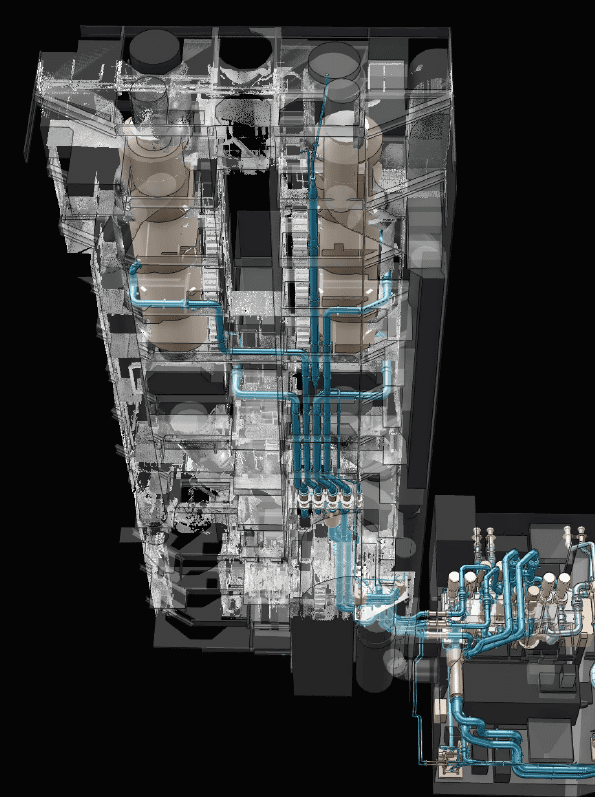Goals
- Increase collaboration
- Incorporate parameterized design
- Integrate engineering and design
- Improve efficiency
- Reduce design time
Challenges
- Large amounts of data demand accuracy
- Need for fast and detailed digital visualisations of physical assets
Results
- Significant cost savings passed on to clients
- E3D allowed BLOM Maritime to integrate and directly import point cloud data
- Installation times cut by 25%

“We were also impressed with the new features and functionalities of AVEVA E3D, such as its draw module and its HyperBubble view, which allows us fast visualisation of specific design details and easy access to component catalogues and specifications.” - Marius Blom, CEO, BLOM Maritime
Background
Lysaker, Norway – BLOM Maritime, based in Norway, is a member of the TECO Maritime Group of Companies, a global organisation offering 3D laser scanning, 360° HD panoramic images, metrology and engineering services to companies around the world, especially to the marine sector. BLOM employs 20 engineers in Poland and its entire network of subsidiaries and strategic business partners employs more than 170 qualified personnel globally and has successfully completed more than 3,300 projects.
Digital point cloud allows comprehensive feasibility and design service
3D laser scanning involves the scanning of geometric features by laser, to produce data which is used to create a point cloud, forming the basis of a 3D visualisation of physical assets, ranging from petrochemical plants to ocean-going vessels. Proven on thousands of projects around the world, 3D laser scanning has, by automating the surveying process, solved the challenge of capturing the physical condition of assets. Laser scanning produces better-quality deliverables in less time, at less cost and more safely, than any comparable method.
Exploiting captured data
Once the vast amount of laser-scanned data is captured, the challenge is how to exploit it to provide an accurate and trustworthy digital asset of the physical asset scanned, which can then be used as an engineering design platform. To do this, after reviewing other software solutions available, BLOM elected to implement AVEVA E3D.
Material-costs and installation-time savings with AVEVA E3D™
BLOM Maritime has already seen significant cost savings for clients since adopting the AVEVA E3D approach to optimise its laser scanning expertise and applying virtual design procedures using AVEVA E3D. This has been especially the case in the retrofit field where the team is confident that everything it has designed or produced, from pipe to structure to foundation, can be installed correctly using the leanest method and employing the fewest people possible.
BLOM estimates that with AVEVA E3D its clients have benefitted by reducing Bills of Material by 35% and cutting installation times by 25%, on projects some of which required over 70,000 hours of installation work.
BLOM laser scanning and AVEVA E3D™ in practice
BLOM’s laser scanning expertise and the capabilities of AVEVA E3D were combined as a holistic offering for the first time in the implementation of a hybrid exhaust gas cleaning system (EGCS) on the Grand Princess cruise ship, owned by Princess Cruises, a Carnival Corporation company. Here, BLOM Maritime was responsible for the feasibility study, the system arrangement, the concept, and the total detail engineering, including all piping and electrical supplies. Using AVEVA E3D, all stages of the project were completed on one engineering platform.
This allowed BLOM to release the total project documentation including material take-off, production ISO drawings for the complex fabrication, arrangement drawings and all the documentation required for approving authorities. At each stage of the design, the point cloud provided an accurate representation of the
current state of the project.
Global potential
BLOM Maritime believes that there is great potential for the combined technology to be used globally in the building of new ships. As Marius Blom points out, ‘Although many of the large shipyards are now firmly committed to digitisation and 3D visualisation in design, many of the smaller yards are still dependent on other yards or designers to produce certain modules, which then need to be assembled on site. By using our combined technology, we can now visit any location in the world, scan the module in the state it is at that moment, and send that data digitally to an engineering hub. There, the module can be examined and any clashes identified or any changes made. This can bring huge cost savings, as corrections can be made before the module is actually sent to site for fitting.’
This same philosophy also applies to retrofitting and refitting of existing vessels, for example in the conversion of a very large tanker into an FPSO. With such projects, a large amount of modification work is required and work on different sections of the vessel is often carried out at different locations. By digitising the process, it is now possible to verify the construction status remotely and eliminate costly on-site rework at the design stage.
“Owners and operators who are embarking on new builds or modification programmes must build their various modules at different geographical locations,” said Marius Blom. “Then assembly is normally carried out at a different shipyard. Only 3D laser scanning with virtual engineering capabilities can ensure efficient and secure module assembly by allowing asbuilt modelling of the different components, wherever they are being created in the world. We have found that AVEVA E3D offers the best solution to help the yards execute this process swiftly and safely.”
